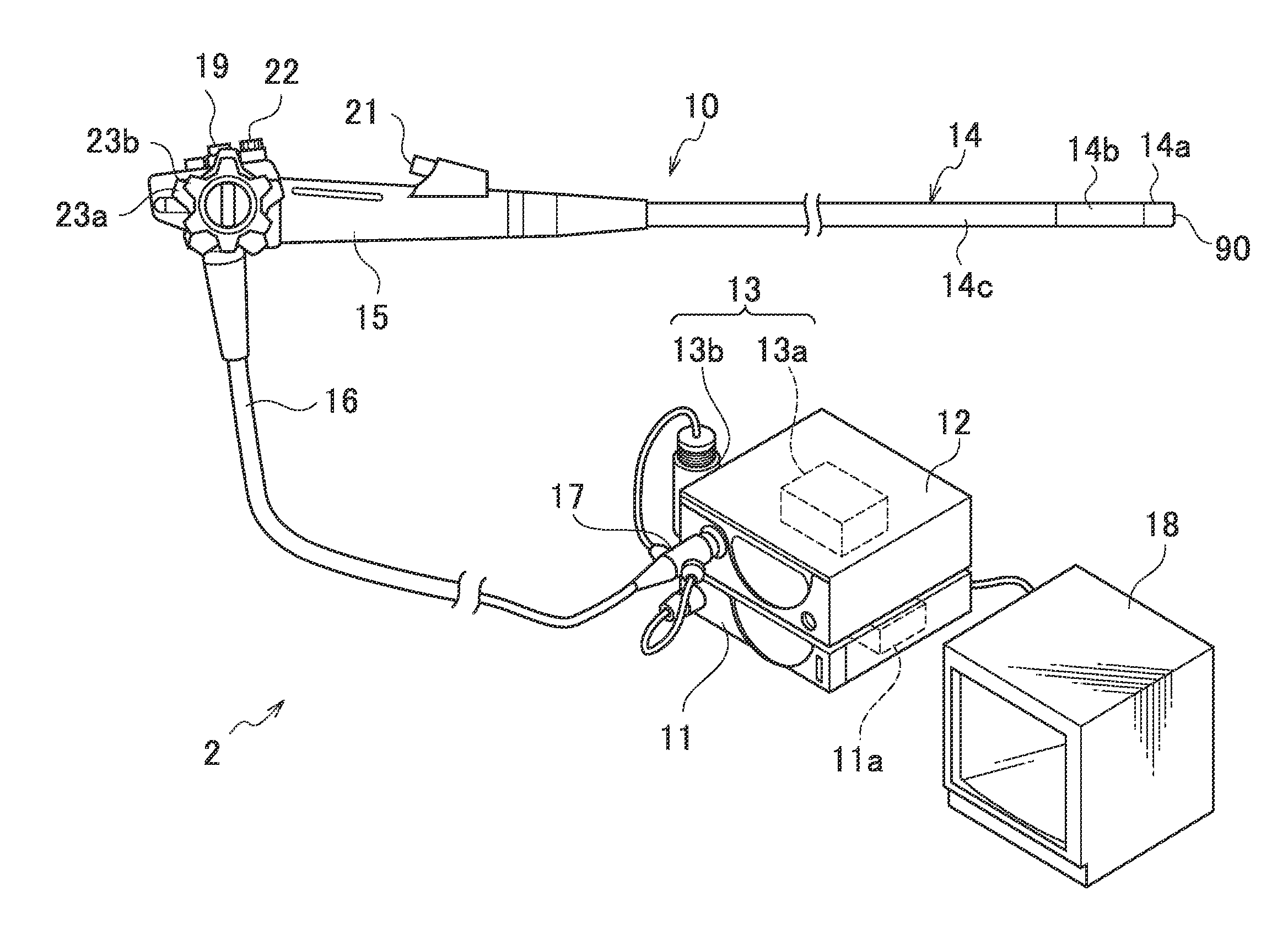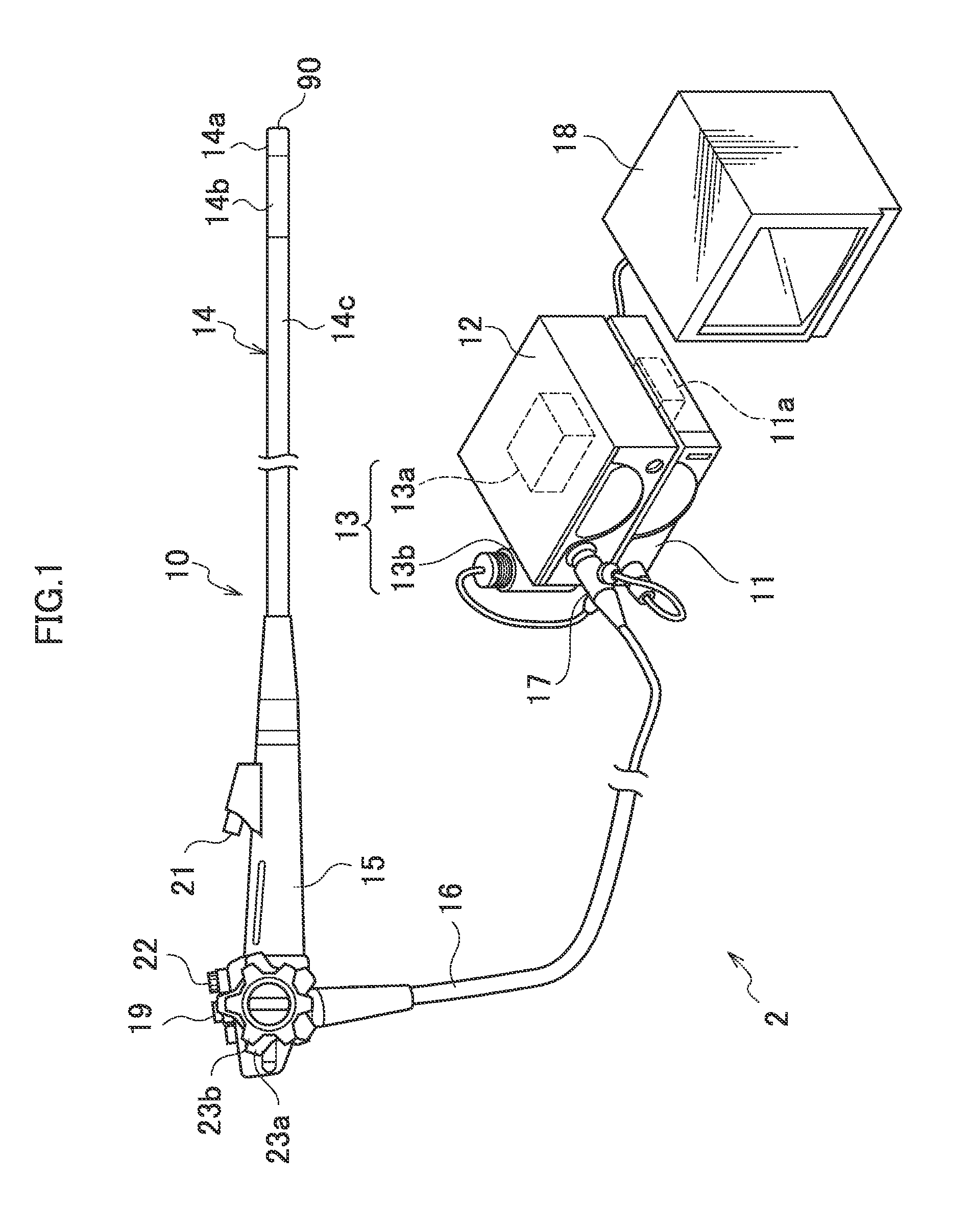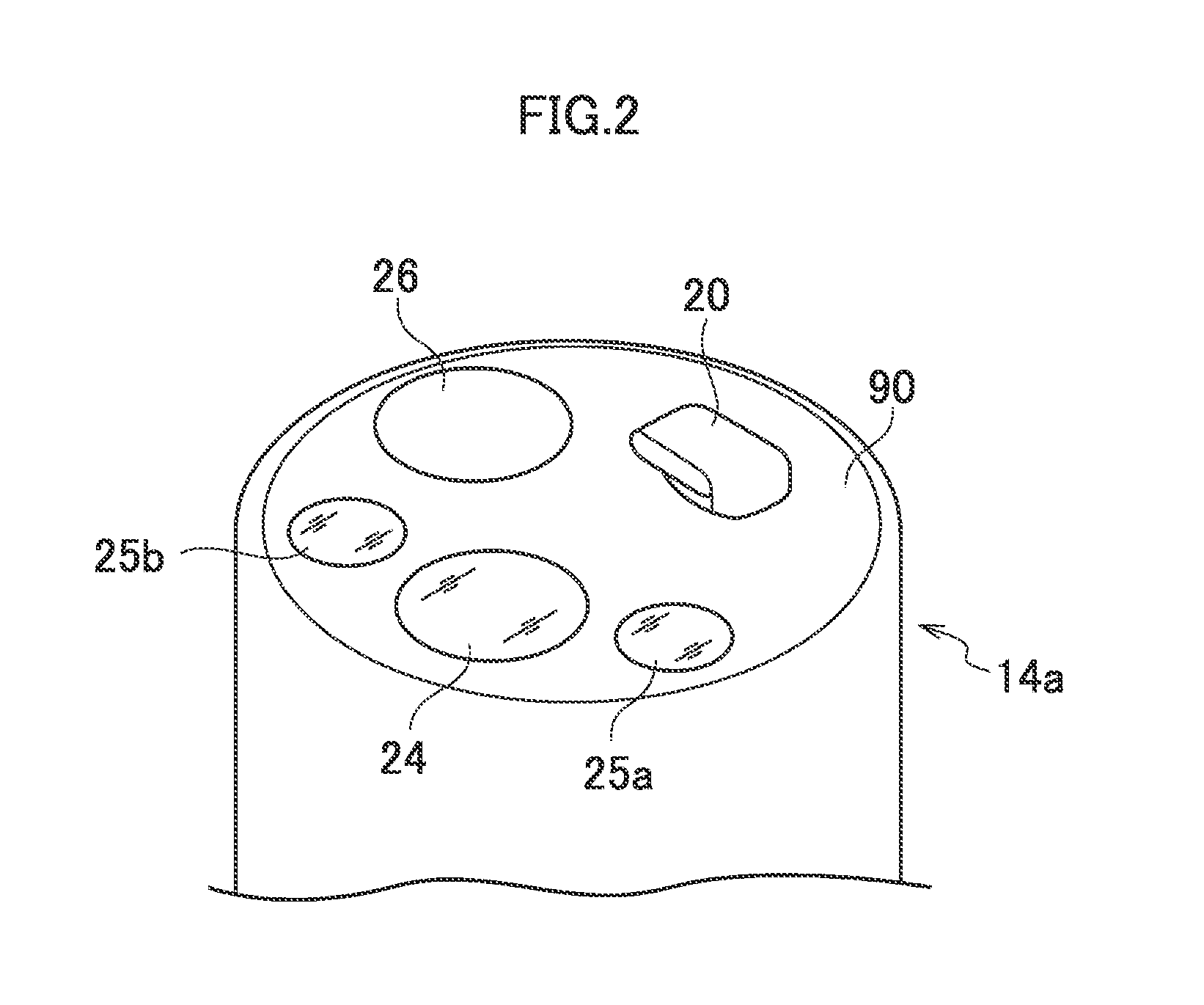Endoscope hood
- Summary
- Abstract
- Description
- Claims
- Application Information
AI Technical Summary
Benefits of technology
Problems solved by technology
Method used
Image
Examples
Embodiment Construction
[0041]Hereinafter, an endoscope hood according to preferred embodiments of the presently disclosed subject matter is described in detail with reference to the accompanying drawings.
[0042]Overall Configuration
[0043]FIG. 1 is an overall configuration view illustrating an endoscope system. An endoscope system 2 illustrated in FIG. 1 includes an endoscope apparatus (endoscope) 10, a processor apparatus 11, a light source apparatus 12 and an air supply / water supply apparatus 13. The air supply / water supply apparatus 13 includes an air supply pump 13a incorporated in the light source apparatus 12 and a washing water tank 13b provided outside of the light source apparatus 12.
[0044]The endoscope 10 includes an insertion part 14, an operation part 15, and a universal code 16. The insertion part 14 is a part to be inserted into a body cavity of a patient (body to be examined), and includes a leading end part 14a, a bending part 14b, and a flexible tube part 14c which are connected in the stat...
PUM
 Login to View More
Login to View More Abstract
Description
Claims
Application Information
 Login to View More
Login to View More - R&D
- Intellectual Property
- Life Sciences
- Materials
- Tech Scout
- Unparalleled Data Quality
- Higher Quality Content
- 60% Fewer Hallucinations
Browse by: Latest US Patents, China's latest patents, Technical Efficacy Thesaurus, Application Domain, Technology Topic, Popular Technical Reports.
© 2025 PatSnap. All rights reserved.Legal|Privacy policy|Modern Slavery Act Transparency Statement|Sitemap|About US| Contact US: help@patsnap.com



